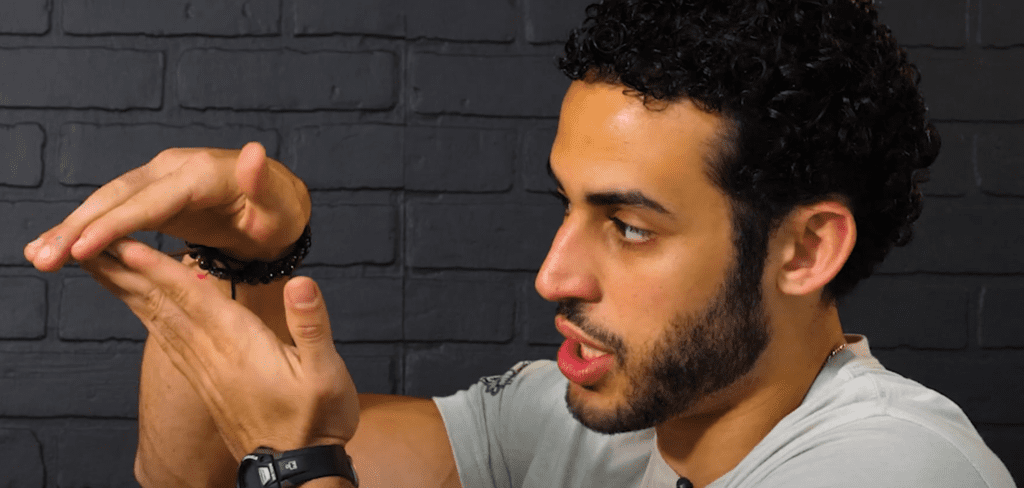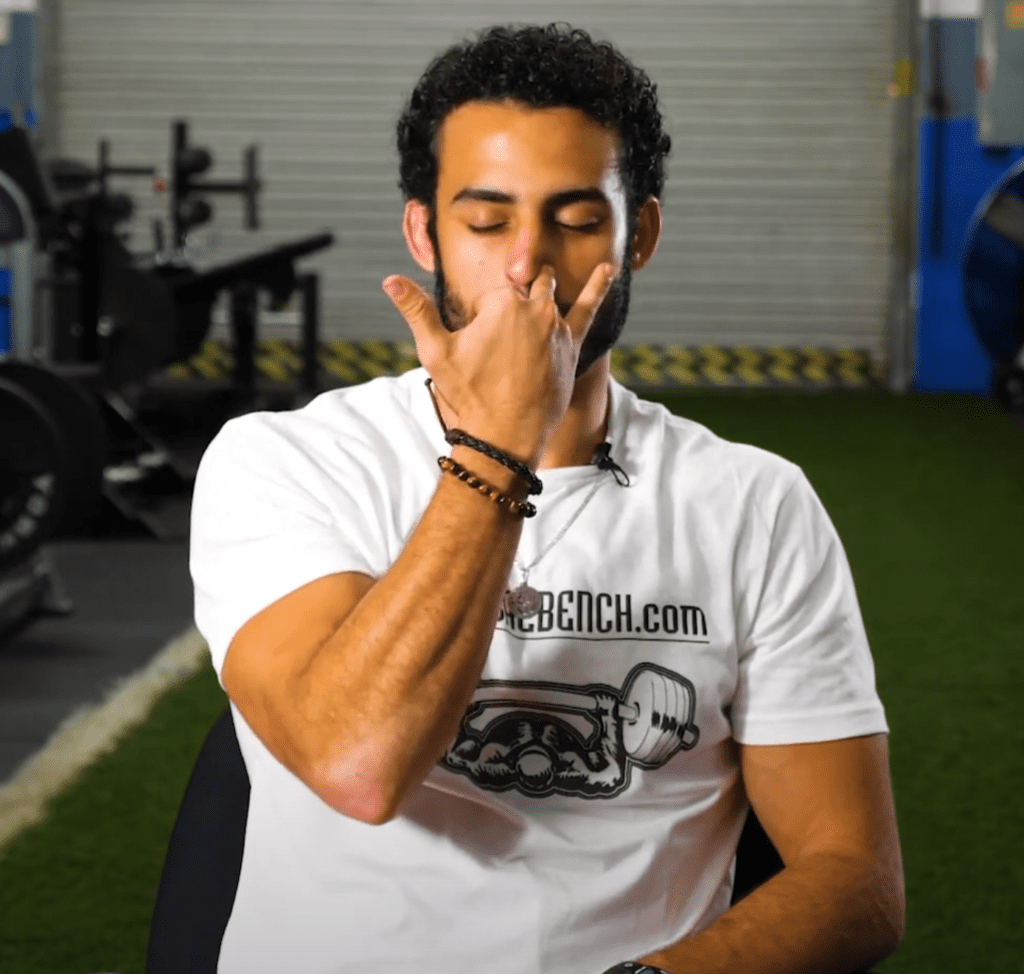Tongue Exercises for Sleep Apnea: Reduce Snoring Naturally
Natural sleep solutions are becoming increasingly popular, especially for those tired of wrestling with CPAP machines or uncomfortable masks. Simple tongue exercises for sleep apnea offer relief by strengthening the muscles that keep airways open during sleep.
The best part is you can do these exercises anywhere in just minutes a day. No more bulky equipment, no more dry mouth or skin irritation. Many people notice improved sleep quality, reduced snoring, and more energy after making them part of their routine.
The Breathing for Sleep program takes this approach further by combining targeted tongue techniques with effective breathing methods. Users who couldn’t tolerate traditional treatments report sleeping better and waking refreshed, often for the first time in years.
What Is Sleep Apnea and Why Does the Tongue Matter?
Obstructive sleep apnea (OSA) occurs when the upper airway becomes partially or completely blocked during sleep, causing breathing to stop temporarily. These pauses in breathing can happen dozens or even hundreds of times per night, severely disrupting sleep quality.
But what causes this blockage? The answer often lies in the tongue. During sleep, the muscles in your throat relax, including your tongue. For people with sleep apnea, the tongue relaxes too much and falls backward into the throat, blocking the airway.

Research suggests that the tongue plays a key role in obstructive sleep apnea by contributing to airway obstruction during sleep. Studies indicate that tongue positioning and movement influence the severity of OSA, highlighting the potential of targeted exercises as a complementary approach to treatment.
How Tongue Exercises Help Sleep Apnea
Tongue and oropharyngeal exercises—sometimes called myofunctional therapy—work by strengthening the muscles that control your tongue and throat. When these muscles become stronger and more toned, they’re less likely to collapse during sleep.
The benefits extend beyond just keeping your airway open:
- Reduced snoring intensity – As airflow improves, the vibration that causes snoring decreases
- Fewer apnea events – Studies show a reduction in apnea episodes after regular tongue exercises
- Improved daytime alertness – Better sleep quality leads to more energy during waking hours
- Lower blood pressure – By improving oxygen flow during sleep, tongue exercises may help reduce cardiovascular strain
While not a replacement for CPAP therapy in severe cases, these exercises have shown remarkable improvement for mild to moderate sleep apnea.
Looking for a comprehensive approach to improving your sleep breathing patterns? The Breathing for Sleep program incorporates these evidence-based techniques into a complete system designed specifically for sleep apnea relief.
5 Effective Tongue Exercises for Sleep Apnea Relief
These scientifically-backed exercises take just minutes to perform but can provide significant benefits when practiced consistently. Try to incorporate them into your daily routine—perhaps while showering or driving to work.

1. Tongue Slide
This exercise strengthens the muscles that keep your tongue from falling backward during sleep.
- Press the tip of your tongue firmly against the roof of your mouth behind your upper teeth
- Slowly slide your tongue backward along the roof of your mouth
- Repeat 10 times, three times daily
2. Tongue Stretch
This stretches and tones the tongue, improving its resting position.
- Stick your tongue out as far as possible, trying to reach your chin
- Hold for 5 seconds while keeping your tongue straight (not curled)
- Repeat 10 times, twice daily
3. Palate Press
This exercise tones the muscles that hold your tongue in its proper position.
- Press your entire tongue upward against your palate (roof of mouth), applying firm pressure
- Hold for 5 seconds while pressing upward
- Repeat 10 times, three times daily
4. Side-to-Side Movement
This lateral movement strengthens the sides of the tongue, which help maintain proper positioning.
- Stick your tongue out and move it slowly from one corner of your mouth to the other
- Make sure your tongue remains extended and doesn’t touch your lips
- Repeat 10 times in each direction, twice daily
5. Swallowing Drill
This exercise works multiple muscles involved in keeping your airway clear.
- Place the tip of your tongue against the roof of your mouth
- Swallow while keeping your tongue in this position
- Make sure your lips are closed and teeth slightly apart
- Repeat 5 times, five times daily
While these exercises are effective, proper technique is crucial. Many people find it helpful to follow guided instruction, especially when starting out. The Breathing for Sleep program includes detailed video training on these and other specialized exercises, ensuring you’re performing them correctly for maximum benefit.
The Breathing for Sleep Program by Zacharia Zeios: Your Sleep Apnea Solution

The Breathing for Sleep program by Zacharia Zeios has emerged as a leader in the natural treatment of sleep apnea. This comprehensive system goes beyond basic tongue exercises to address the root causes of sleep-disordered breathing.
Zacharia Zeios, a licensed neurosomatic therapist and registered yoga teacher with extensive training in breathing mechanics, developed this program after his own struggles with sleep disruption. As a former U.S. Marine who experienced severe sleep issues, Zeios brings a unique perspective to sleep apnea treatment.
The Breathing for Sleep program features:
- Targeted tongue and breathing exercises designed specifically for sleep apnea sufferers
- Step-by-step video coaching ensuring proper technique for maximum effectiveness
- Audio routines to guide your practice just before bed
- Comprehensive handbook covering all aspects of sleep breathing optimization
What sets this program apart is its focus on activating the hypoglossal nerve—what Zeios calls the “sleep nerve”—which controls tongue position during sleep. By properly stimulating this nerve through specific exercises, users report falling asleep faster and experiencing fewer breathing disruptions throughout the night.
Join over 78,000 others who have taken control of their sleep with this natural approach —›
Tips to Maximize Results with Tongue Exercises
To get the most benefit from your tongue exercises, follow these expert recommendations:
Consistency is Key
- Practice daily: Perform your exercises for 15-30 minutes total each day
- Set a schedule: Link exercise time to another daily habit to build consistency
- Track progress: Keep a log of your exercises and sleep quality improvements
- Be patient: Most users see significant improvements within 2-3 months of regular practice
Complementary Approaches
Tongue exercises work best when combined with other sleep-friendly habits:
- Maintain healthy weight: Even modest weight loss can reduce apnea severity
- Practice nasal breathing: Train yourself to breathe through your nose during the day
- Sleep position: Try side sleeping rather than back sleeping
- Avoid alcohol before bed: Alcohol relaxes throat muscles, worsening apnea
When to Seek Additional Help
While tongue exercises can be remarkably effective, they’re not suitable as the only treatment for everyone:
- Severe apnea: Those with AHI scores above 30 should use exercises as a complement to CPAP
- Anatomical issues: Physical obstructions may require medical intervention
- Lack of progress: If you don’t notice improvements after three months, consult a sleep specialist
The Breathing for Sleep program incorporates all these recommendations into its comprehensive approach, providing a structured path to better sleep breathing. With both immediate techniques for quick relief and long-term strategies for lasting improvement, it offers a complete solution for sleep apnea sufferers.
Conclusion
Tongue exercises represent one of the most promising natural approaches to sleep apnea management in 2025. By strengthening the muscles that control your airway during sleep, these simple techniques can reduce symptoms, improve sleep quality, and enhance overall health.
The science is clear: proper tongue positioning and muscle tone play crucial roles in maintaining open airways during sleep. With consistent practice of the exercises outlined above, many sleep apnea sufferers have experienced significant improvements in their condition.
For those seeking a comprehensive, guided approach, the Breathing for Sleep program by Zacharia Zeios offers a complete system for addressing sleep-disordered breathing at its source. By combining specialized tongue exercises with innovative breathing techniques, the program provides a natural path to better sleep.
Ready to take control of your sleep apnea and wake up feeling truly refreshed? Join the Breathing for Sleep program today and discover what over 78,000 users have already experienced—the natural way to better breathing and deeper sleep.
Frequently Asked Questions (FAQ)
Do tongue exercises really work for sleep apnea?
Yes, tongue exercises can help with moderate sleep apnea. A study in the American Journal of Respiratory and Critical Care Medicine found that oropharyngeal exercises reduced OSAS severity and symptoms for moderate OSAS. While results vary by individual, consistent practice shows significant benefits for most people with mild to moderate sleep apnea.
How long before I see results from tongue exercises?
Most people begin noticing improvements in snoring within 2-4 weeks of daily practice. More substantial improvements in sleep apnea symptoms typically emerge after 2-3 months of consistent exercise. The Breathing for Sleep program users often report faster results due to the program’s targeted approach and proper technique guidance.
Can I replace my CPAP with tongue exercises?
Whether you can replace your CPAP with tongue exercises depends on your sleep apnea severity. For mild to moderate cases, some patients have successfully reduced or eliminated CPAP use after several months of tongue exercises. However, those with severe sleep apnea (AHI > 30) should use tongue exercises as a complementary approach while continuing CPAP therapy unless otherwise advised by their doctor. Always consult with your sleep specialist before making changes to prescribed treatments.
Are tongue exercises difficult to learn?
Tongue exercises are simple to learn but require proper technique for maximum effectiveness. Many people find it helpful to start with guided instruction. The Breathing for Sleep program includes detailed video demonstrations to ensure you’re performing the exercises correctly from day one.
Can children benefit from tongue exercises for sleep apnea?
Yes, myofunctional therapy including tongue exercises has shown promising results for pediatric sleep apnea. These exercises are particularly valuable for children as they can potentially address the root causes of breathing issues during a critical developmental period. Always consult with a pediatric sleep specialist before starting any treatment program.
Health Disclaimer: This article is for informational purposes only and is not intended to diagnose, treat, cure, or prevent any medical condition. Sleep apnea is a serious health condition that may require medical intervention. Always consult a qualified healthcare professional before starting any new treatment, including tongue exercises or breathing techniques. If you experience persistent sleep issues, excessive daytime fatigue, or other symptoms of sleep apnea, seek medical advice to determine the best course of action for your health.
Disclosure: We may earn a commission if you purchase through our links.
